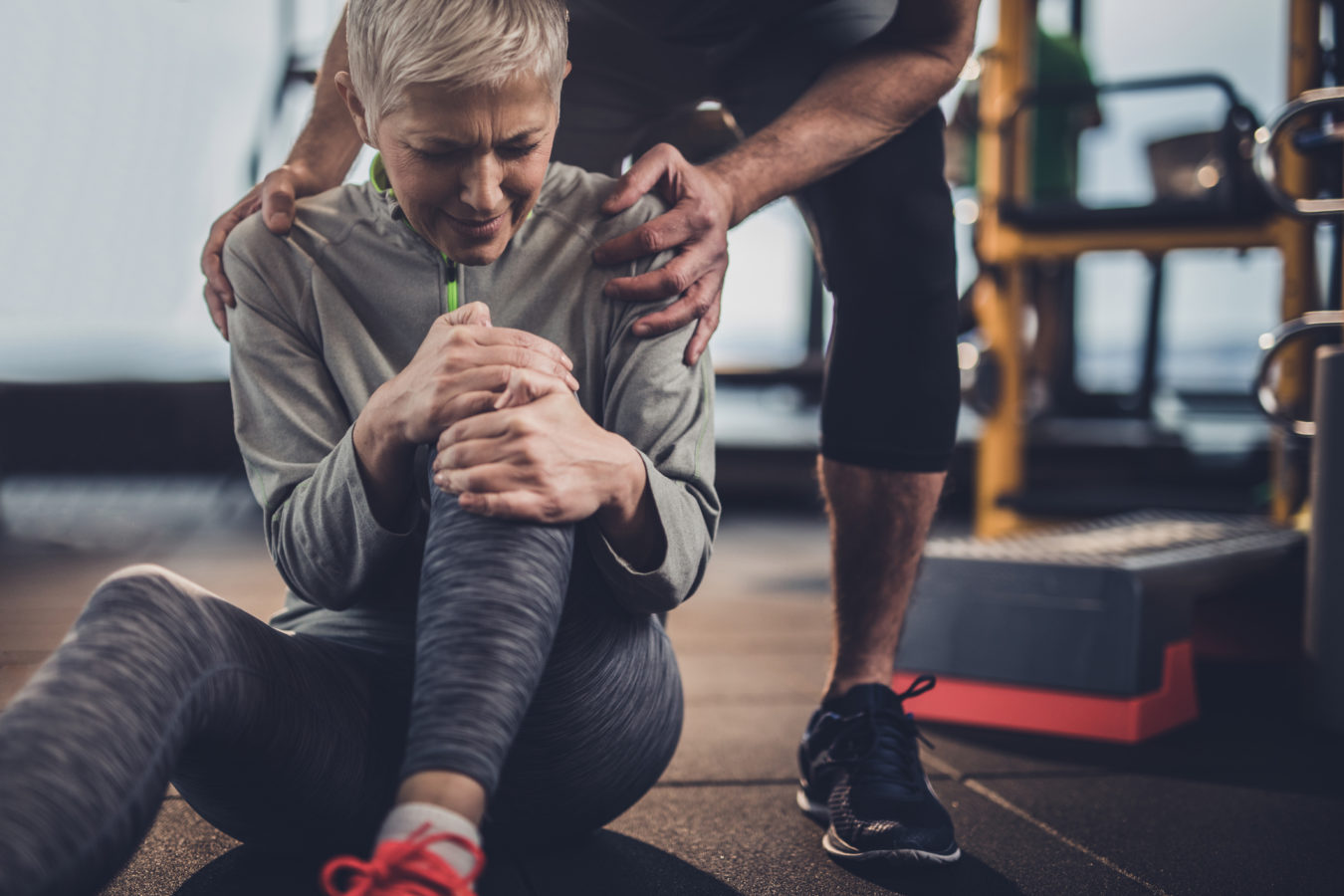
A successful workout can give you a dopamine rush and leave you feeling great throughout the day, but how much is too much? Our bodies do a great job of letting us know when we’re pushing things too far and signal when it’s time to take a much-needed break. Here are some of our top tips to limit injuries in the gym.
When you’re training at the gym or at home, be sure to train your entire body and not just focus on one muscle group. Focusing on one muscle group in isolation can not only lead to overuse injuries but can also lead to the lack of development in other areas of your body needed for other movements and exercises. Many compound movements and exercises require multiple muscle groups to work in tandem to effectively perform the maneuver. Great compound exercises to add to your current program include squats, lunges, overhead presses, and pushups.
In addition to varying your muscle groups targeted, your exercise routine should also vary in type. For instance, focusing only on cardio when you’re at the gym might help to improve your stamina and endurance, but it won’t help you when you’re trying to lift heavy objects or improve your mobility. When working out, you should work to implement a comprehensive program that will help you build functional strength, improve your endurance, and increase your range of motion in all muscle groups, not just one.
Think about that feeling as you’re walking into your gym for a new workout. Are you excited, focused, and ready to destress? Working out can be one of the most enjoyable activities you do throughout the day, but if you find that you’re dreading going to the gym, you may be setting yourself up for an injury. Disinterest in your workout can lead to poor form or technique. For example, you may choose the wrong amount of weight on a machine, forget the number of repetitions you’ve done in a set, or speed through the exercises to get the workout over with.
You can combat boredom in your workouts by trying a new class, switching up your routine, listening to your favorite playlist or podcast, or working out with a friend. Dreading your workouts is one of the first signs that you’re overdoing it and pushing your body too far. If you aren’t excited to get up and head to the gym for an upcoming workout, you may need a few days off to properly recover and take a much-needed mental break before resuming your workouts.
Muscle soreness or Delayed Onset Muscle Soreness (DOMS) is one of the side effects that can stem from a workout and the intense stress you place on your muscles. Soreness is usually described as muscle aches, tightness, or stiffness. Every great workout creates some level of soreness, but it can become a concern when the soreness turns into pain or lasts for an extended period of time without getting better.
If you’re working out for the first time or getting back into the swing of things, you might feel some soreness in the muscle groups that you targeted while working out. Typical soreness after a workout will subside between 24 to 48 hours after a workout.
Pushing through elevated levels of soreness can increase the risk of injury or further aggravation of a previous injury.
If you begin to feel pain during or after a strenuous workout, you should stop what you’re doing and seek the advice of a qualified healthcare professional. Some of the most common gym injuries include back pain, knee pain, ankle pain, and wrist pain.
Gym injuries don’t need to slow you down. Our licensed physical therapists are movement experts who can help you get back to full speed and back to your favorite workouts with physical therapy. Staying active and focusing on your healthy living and wellness goals often starts with making sure you’re taking care of your body and seeking treatment when you get an injury. Physical therapy can help you alleviate pain, improve function, restore mobility, and get you back to working out in the gym. Schedule an appointment at a physical therapy clinic near you and treat your gym injuries with physical therapy!